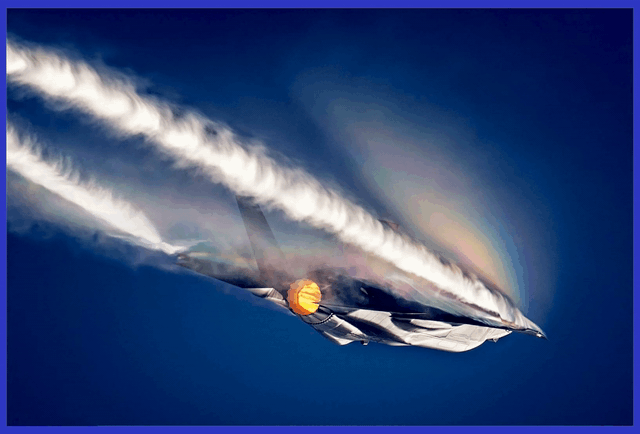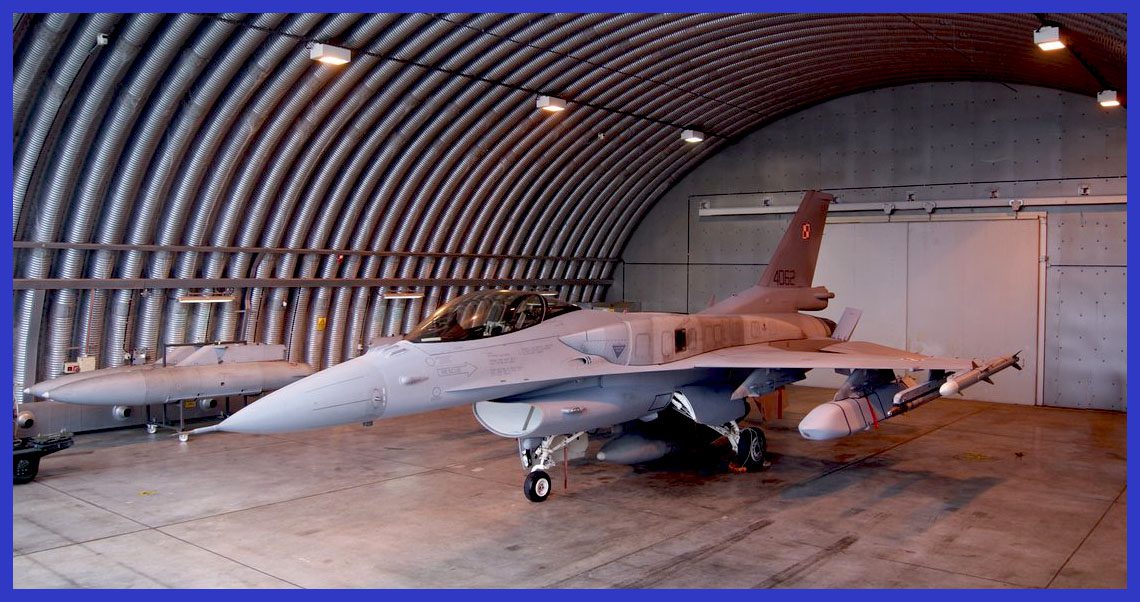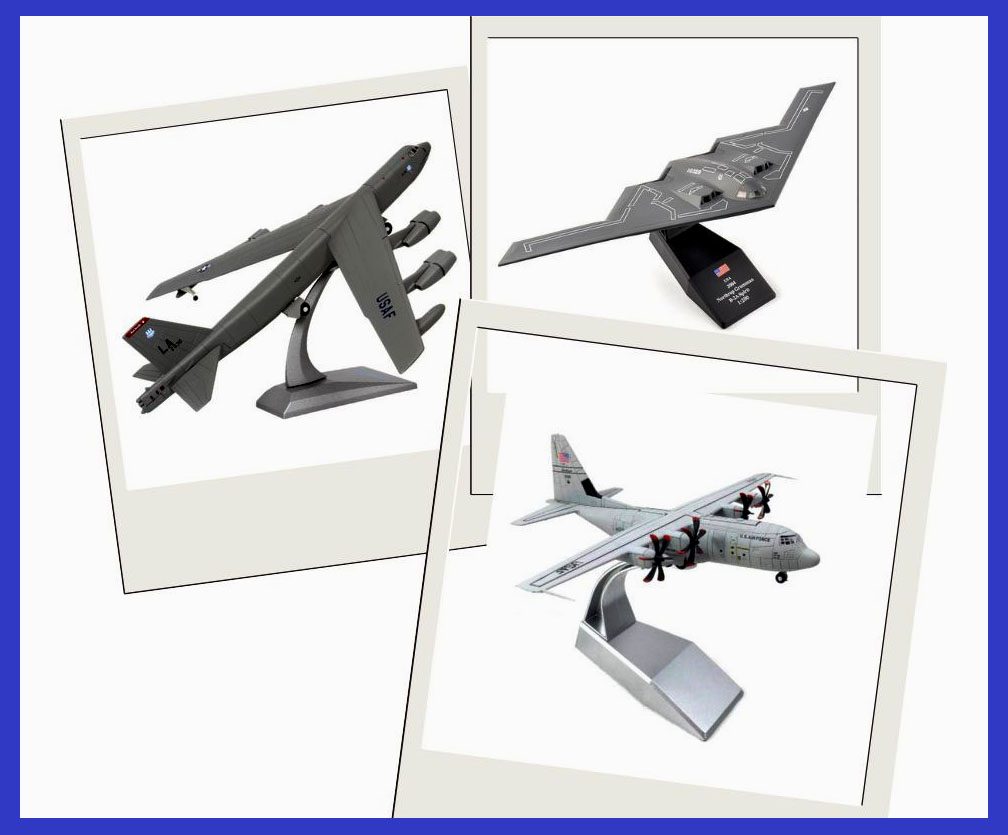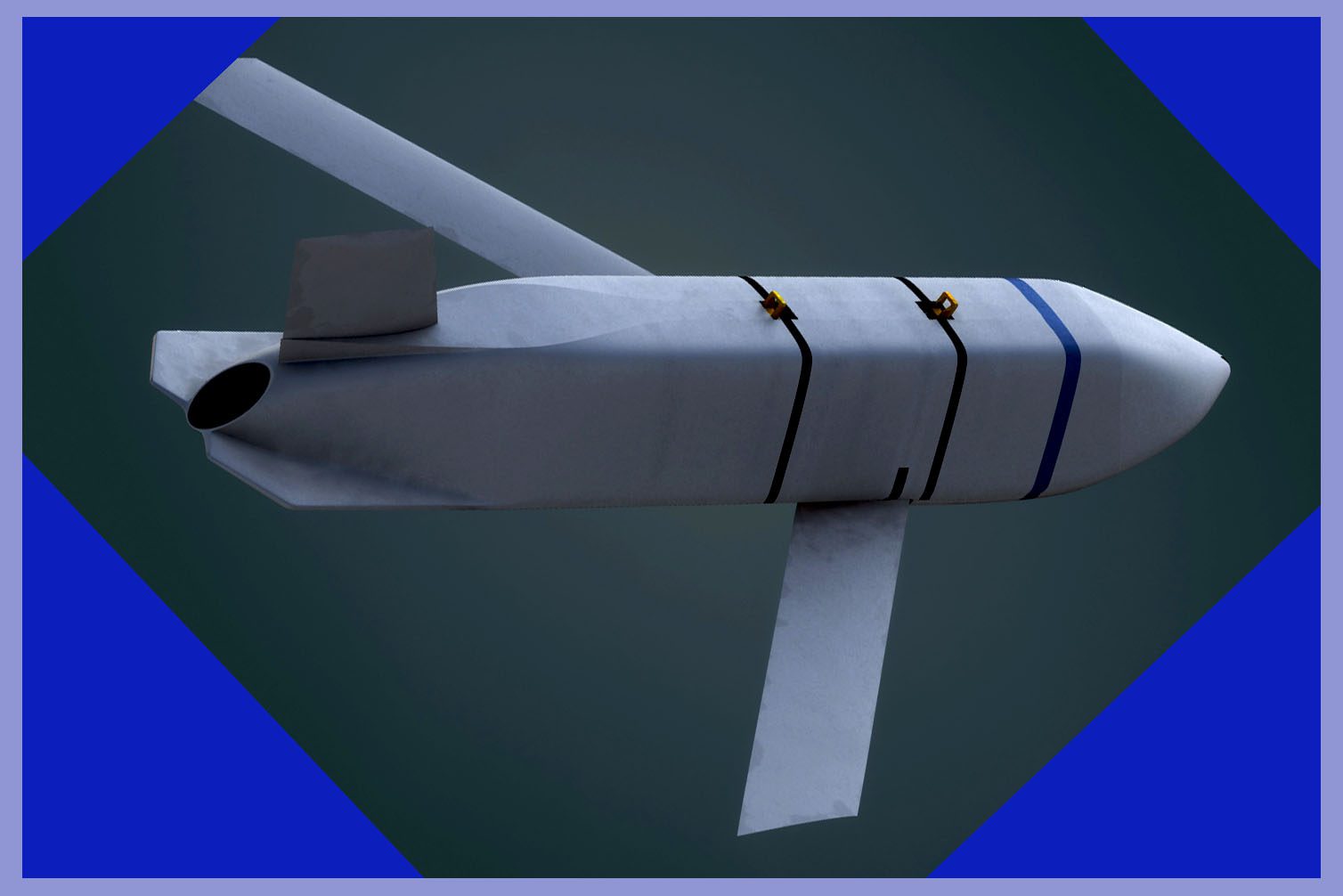What is AGM-158 JASSM? Delving into its Exact Details by its Origin, Design & Development as of 2023
The Joint Air-to-Surface Standoff Missile (JASSM), developed by Lockheed Martin Missiles and Fire Control (MFC) for the United States Air Force (USAF), is a modern, long-range, precision-guided, partially stealth cruise missile. It is specifically designed to engage high-value targets from a significant distance while minimizing risks to aircraft and aircrews. The JASSM is capable of being launched from various aircraft platforms, enhancing its versatility. With its aerodynamic and sleek design, the missile incorporates stealth capabilities that enable it to evade enemy radar and air defence systems effectively. Utilizing its low radar cross-section and specialized coatings, the JASSM reduces visibility, making it challenging for adversaries to detect and track.

This unique stealth capability allows the missile to penetrate hostile territory undetected and at substantial depths. However, it is worth noting that in modern warfare, operations of this nature are typically conducted during nighttime for optimal effectiveness.
To ensure precise navigation during the initial flight phase, the missile’s primary guidance system consists of an inertial navigation system (INS), a global positioning system (GPS) receiver, and an infrared thermography sensor. As the JASSM approaches the target location, it transitions to its terminal guidance system, which incorporates an infrared seeker. The seeker employs an onboard library of target photos to compare with the real-time infrared scene, guaranteeing accurate aiming and maximizing overall accuracy.
The AGM-158 JASSM completed testing and was introduced into service with the U.S. Air Force in 2009. It has also been adopted by foreign countries such as Australia, Finland, and Poland since 2014. In 2014, an extended range version called the AGM-158B JASSM-ER (Joint Air-to-Surface Standoff Missile-Extended Range) was introduced. As of June 2018, Lockheed Martin had delivered over 2,000 JASSMs, including both variants, to the USAF.
Equipped with a 1,000-pound (450-kilogram) penetrating blast-fragmentation warhead, the JASSM has the capability to strike hardened and heavily defended targets with high precision. The warhead is specifically designed to penetrate fortified structures, such as bunkers and command centres, before detonating, resulting in significant damage and destruction.

The Story Behind the Development of the AGM-158 JASSM:
The development of the AGM-158 Joint Air-to-Surface Standoff Missile (JASSM) can be traced back to the late 1980s when the United States Air Force recognized the need for a long-range, precision-strike capability against heavily defended targets. This concept arose from the Air Force’s objective to create standoff weapons that could engage targets from a safe distance, thereby reducing the vulnerability of aircraft and aircrews to enemy defences.
The JASSM project commenced in 1995 following the termination of the AGM-137 TSSAM project. Initially initiated by Northrop in 1986, certain issues prompted the project’s withdrawal. However, due to the continued need for such weapons, the military swiftly announced a subsequent project with similar objectives. In 1996, initial contracts for two competing designs were awarded to Lockheed Martin and McDonnell Douglas, resulting in the AGM-158A and AGM-159A missile designations, respectively.
In 1998, Lockheed Martin emerged as the winner of the project and was granted the contract to develop the JASSM. The missile was envisioned as a replacement for the ageing Air-Launched Cruise Missile (ALCM) and Conventional Air-Launched Cruise Missile (CALCM). The objective was to create a highly accurate and stealthy cruise missile with an extended range, capable of penetrating sophisticated enemy air defense systems.

In 1999, the AGM-158 Joint Air-to-Surface Standoff Missile (JASSM) entered the phase of powered flight tests, which proved to be successful. Subsequently, production of the missile commenced in December 2001. However, the weapon encountered some challenges during operational testing and evaluation in 2002, with two missiles failing the tests. As a result, the project experienced a delay of several months before finally completing its development in April 2003.
Unfortunately, two additional launches encountered issues, this time related to launcher and engine problems. In July 2007, the Pentagon approved a $68 million program aimed at improving JASSM reliability and recertifying the missile. However, it wasn’t until 2008 that a decision was made regarding the continuation of the program. During this period, Lockheed Martin took the initiative to address the issues at its own expense while also implementing tighter manufacturing processes.
Certain tests conducted in 2009 demonstrated greater success, with reports indicating that 15 out of 16 rounds successfully hit their intended targets, surpassing the 75% benchmark set for the test. This achievement cleared the way for the JASSM to enter into service. As of 2023, the United States Air Force has plans to procure up to 4,900 AGM-158 missiles, although the exact number remains classified.

The Incorporation: of the AGM-158 Joint Air-to-Surface Standoff Missile (JASSM) into the United States Air Force involved several key steps, including acquisition, integration, training, and operational deployment.
Acquisition: After the development of the JASSM by Lockheed Martin, the United States Air Force initiated the acquisition process. This involved procurement and contracting activities to secure the missiles for the Air Force inventory. The acquisition process also included evaluating the missile’s performance, cost-effectiveness, and compliance with operational requirements.
Integration: Once the acquisition was complete, the JASSM underwent integration into various aircraft platforms capable of carrying and launching the missile. The integration process involved modifying the aircraft to accommodate the JASSM, including the installation of missile launchers, updating avionics systems, and ensuring compatibility with the missile’s guidance and control interfaces. The JASSM was specifically designed to be carried by a wide range of American aircraft, including the F-15E, F-16, F/A-18, F-35, B-1B, B-2, and B-52. Unlike typical cruise missiles that fly close to the ground to avoid detection, the JASSM’s stealthy design enables it to fly at higher altitudes, achieving long flight ranges without expending energy manoeuvring around terrain obstacles.

Training based on missile features: The AGM-158A is equipped with a Teledyne CAE J402 turbojet engine, providing reliable power for its operation. Prior to launch, the wings are intelligently folded to reduce the overall size of the missile, and upon launch, the wings effortlessly deploy automatically. With a streamlined design, the missile incorporates a single vertical tail, ensuring stability during flight. Its advanced guidance system relies on a combination of inertial navigation and global positioning system updates, enabling precise and accurate targeting.
To enhance target recognition and facilitate terminal homing, an advanced imaging infrared seeker is seamlessly integrated into the missile’s design. Furthermore, a state-of-the-art data link system empowers the missile to transmit real-time information about its location and status during flight, greatly enhancing the assessment of the inflicted damage on the target. Recognizing the importance of effective utilization, comprehensive training programs have been developed to equip aircrews and maintenance personnel with the necessary skills and knowledge. Pilots and weapon systems officers undergo rigorous training covering various aspects of the missile’s operational employment, including mission planning, meticulous target selection, and efficient engagement procedures.
Operational Deployment: After thorough preparation of the aircraft and personnel, the JASSM was deemed fully ready for operational deployment. The missiles were meticulously loaded onto the aircraft, and the highly skilled aircrews conducted comprehensive mission rehearsals and performed final checks prior to embarking on their operational sorties. With its remarkable long-range capabilities and precision-strike potential, coupled with a potent deep penetrator 450 kg (992 lb) warhead, the JASSM emerged as an invaluable asset for the Air Force. This advanced missile system empowered the Air Force to effectively engage high-value targets from a secure distance, significantly mitigating the risks faced by aircraft and aircrews.

Three AGM-158 JASSM Variants as of 2023:
There are three main variants of the AGM-158 Joint Air-to-Surface Standoff Missile (JASSM) that were developed and in use by the United States Air Force (USAF)
AGM-158B JASSM-ER (Joint Air-to-Surface Standoff Missile-Extended Range): This is an extended-range variant of the AGM-158 JASSM. Developed by the US Air Force, it shares 70% hardware commonality and 95% software commonality with the original JASSM. While retaining the same basic design, the JASSM-ER offers increased range capabilities, enabling the engagement of targets at extended distances, with an estimated range of approximately 600 nautical miles (1,100 kilometres).
It incorporates the advanced guidance system of the AGM-158A JASSM and underwent its first flight test on May 18, 2006. Initially deployed on the B-1 platform, the JASSM-ER was later integrated into the B-52, F-15E, F-16, and F-18 aircraft. The B-1B can carry up to 24 JASSM-ERs, the B-2 can carry 16 missiles, and the B-52 with the 1760 Internal Weapons Bay Upgrade (IWBU) can carry 20 JASSM-ERs.
Although too long to be carried internally on the F-35 Lightning II, it can be carried externally, compromising the aircraft’s stealth features. The JASSM-ER, known for its long-range and stealth capability, entered service with the USAF in April 2014. On May 14, 2015, the JASSM-ER was chosen as the optimal air vehicle for the Counter-electronics High Power Microwave Advanced Missile Project (CHAMP) payload, an electronic warfare technology that uses high-power microwave energy to destroy electronic equipment without physical impact. This selection was made due to the JASSM-ER being an operational system, allowing for the miniaturization of CHAMP into an operationally relevant system.

The AGM-158C LRASM (Long-Range Anti-Ship Missile): is a purpose-built weapon for anti-ship operations, with a specific focus on targeting surface warships. It is equipped with advanced sensors, enabling it to detect and recognise targets effectively. Additionally, its autonomous guidance system allows the missile to engage targets independently, even without continuous communication from the launching platform. Boasting a remarkable range of over 200 nautical miles (370 kilometres), the LRASM earned the official designation of AGM-158C by the Navy in August 2015. Notably, the LRASM demonstrated its Early Operational Capability on the B-1B aircraft in December 2018.
AGM-158B-2: Starting in March 2016, Lockheed Martin initiated research on an enhanced wing design to significantly increase the range of the missile. In September 2018, the corporation was awarded a contract to develop an “Extreme Range” variant of the AGM-158. This upgraded version of the weapon is specifically designed to accommodate a 2,000 lb (910 kg) warhead with a range of 1,900 km (1,200 mi; 1,000 nmi) while weighing around 5,000 lb (2,300 kg).
The missile incorporates several notable features, including a new missile control unit, wing modifications, a fresh paint coating, an Electronic Safe and Arm Fuze, a secure GPS receiver, and program protection requirements. Originally referred to as the JASSM-XR, it was later renamed the AGM-158D. The initial delivery of these missiles is scheduled to commence in January 2024 as part of Lot 19, following the initiation of low-rate production in 2021. During the production of the first 40 missiles, the rate will be set at five per month. Consequently, the designation was once again modified to AGM-158B-2.

The Operational History of the AGM-158 JASSM as of 2023:
Operation Inherent Resolve: The AGM-158 JASSM has played a significant role in the military campaign against ISIS in Iraq and Syria. It has been extensively employed to target ISIS locations, including command centres, weapons caches, and infrastructure. This has provided coalition forces with precise and effective strike capabilities. The initial deployment of the JASSM took place during missile strikes in April 2018 amid the Syrian Civil War. Nineteen JASSMs were fired from two B-1 Lancers, specifically targeting three suspected Syrian government chemical weapons sites.
The successful destruction of the Barzah Research Center was among the achieved results. In April 2018, two unexploded missiles were discovered by the Syrian Arab Army and subsequently transferred to Russia for further examination. Another notable utilization of the AGM-158 JASSM occurred in 2019 during the Barisha raid, aimed at apprehending or eliminating Abu Bakr al-Baghdadi, the former leader of ISIL. Multiple AGM-158A missiles were used to level the compound where the raid took place, marking the missile’s second deployment in combat.
AGM-158 JASSM Launcher Module for Delivering Multiple Missiles: In recent years, specifically in 2020 and 2021, the Air Force Research Laboratory and Lockheed collaborated to develop and conduct tests on the Rapid Dragon, a launcher module capable of deploying multiple AGM-158 missiles. The purpose of this module is to enable the airdropping of AGM-158 JASSMs using C-130 or C-17 cargo planes, providing a cost-effective method for rapidly delivering a large number of missiles using existing airlift assets without the need for modifications.
A notable demonstration of the Rapid Dragon took place in November 2022 off the coast of Norway in the Norwegian Sea, specifically at the Andøya Space Defense Range. The demonstration involved the utilization of an MC-130J Commando II aircraft from the 352nd Special Operations Wing (67th Special Operations Squadron) as part of Exercise Atreus. This capability is particularly valuable for air forces other than the USAF that do not possess dedicated bombers capable of carrying a substantial quantity of air-launched cruise missiles (ALCMs).
The AGM-158 JASSM is currently being utilized by multiple operators, including the United States, Australia, Finland, and Poland, showcasing the widespread adoption of this highly advanced missile system as of 2023. These nations have recognized its formidable capabilities and have incorporated them into their military arsenals to enhance their operational effectiveness.

Technical Specifications Of The AGM-158A and 158B JASSM Missile:
- Weight: AGM-158A _ 1,021 kg ( 2,251 lb ) and AGM-158B _ 1,200 kg ( 2,600 lb )
- Length: 14 ft ( 4.28 m )
- Diameter/Width: AGM-158A _ 22 in ( 550 mm ) and AGM-158B _ 25 in ( 635 mm )
- Wingspan: 8 ft 10 in (2.7 m)
- Warhead: WDU-42/B deep penetrator warhead weighing 450 kg ( 1,000 lb )
- Detonation: FMU‐156/B impact fuze
- Engine: Williams F107‐WR‐105 turbofan
- Range: AGM-158A _ 370 km ( 230 mi ) and AGM-158B _ 926 km ( 575 mi )
- Accuracy: 9ft 10 in ( 3 m ) circular error probable ( CEP )
- Speed: Subsonic estimated speed of around 1000 km/h / Mach – 0.95
- Guidance system: Global Positioning System (GPS) / inertial navigation system (INS) / infrared thermal imaging
- Launch Platform: Wide range of NATO standard American aircraft, including the Fighters such as F-15E Eagle, F-16 Fighting Falcon, F/A-18 Super Hornet, F-35 Lightening-II, Bombers such as B-1B Lancer, B-2 Spirit, B-52 Stratofortress, Transport aircraft such as C-130 Super Hercules and C-17 Globe master III with Rapid Dragon system.

Moreover, do not miss the exclusive opportunity to acquire exquisite large-scale 1/72 premium die-cast models of the formidable Boeing B-52 Stratofortress, Northrop Grumman B-2A Spirit, and C-130J Super Hercules. These remarkable military aircraft are now conveniently available on AirModels. Click here to access these exceptional models before stock runs out.
In conclusion, the JASSM is a highly capable and versatile weapon system that has demonstrated its exceptional performance in various military operations. With its long-range precision strike capability, the JASSM has played a crucial role in effectively engaging high-value targets and neutralizing enemy infrastructure. It is designed with a low-observable airframe and advanced guidance systems, which contribute to its enhanced survivability and accuracy. By engaging targets from stand-off distances, the JASSM minimizes risks to personnel and platforms while maximizing the success of missions. The missile system continues to undergo advancements and integration into various platforms, providing a reliable and formidable weapon for strategic and tactical missions. Its precision, versatility, and long-range capabilities make it an invaluable asset in modern warfare.
Important Announcement for Our Valued Readers!
After an article is published, it is possible that updates or changes may have occurred beyond the time of publication. Therefore, it is important to be aware that certain information in the article might be outdated. To ensure the most accurate analysis, it is highly recommended to verify the content with the latest sources available.
However, we are dedicated to delivering outstanding articles on military products and global updates. Maintaining quality and smooth operation requires resources. Your support sustains our efforts in providing insightful content. By purchasing high-quality products through our affiliated links, you help us keep our platform alive and acquire top-notch items. Your unwavering support is invaluable and inspires us to strive further.
We welcome your suggestions and requests for more information, as we value feedback from our readers. If there’s specific defence material or equipment not covered on our site, please share your request in the comments. We’ll strive to research and provide the required information. We sincerely thank you for your unwavering interest in our website, and we eagerly anticipate hearing from you! Enjoy your reading experience!
